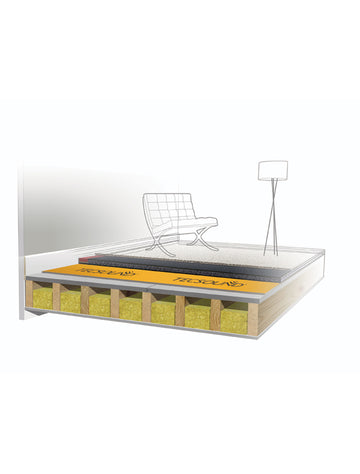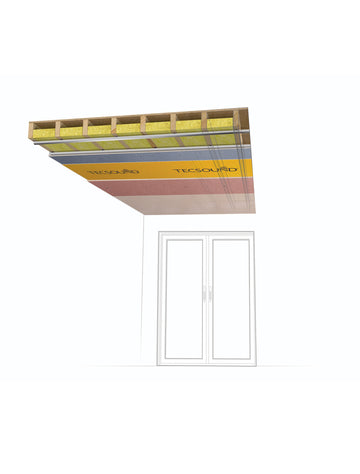

Part E Compliance - Design Advice for passing your sound test and meeting achieving building regulations
Sound Insulation Store have been assisitng our clients to meet Part E of the building regulations and passing sound tests since the introduction of mandatory sound testing in 2003. Book a consultation with one of our acoustic experts and discuss your project today.

Book a FREE 45 mins Part E Consultation
To talk about your project. We can provide a specification to acheive Part E. We give a free 45‐minute Part E online consulation for your project (Teams / Zoom). Arrange a phone appointment with one of our specialists at a time that fits your schedule to find the best solutions for you.
Call us: 01928 571 856

Part E Building Regulations
In England and Wales, noise control in residential buildings is governed by Approved Document E, a regulation designed to protect residents from disruptive noises originating in adjacent rooms or neighboring properties—an issue frequently causing tension among occupants. This regulation applies broadly to houses, apartments, converted dwellings, and residential accommodations such as hotels, nursing homes, and student housing.
Approved Document E, often referred to as Part E of the Building Regulations in England and Wales, sets out specific standards for sound insulation to ensure a reasonable level of acoustic comfort in residential settings. The document outlines two primary categories of requirements: resistance to sound transmission between dwellings (such as walls and floors separating apartments or houses) and sound control within a single dwelling (such as internal walls and floors).
Browse our solutions
Part 'E' Building Regulations
What is Part E of the Building Regulations?
Part E covers 'Resistance to the Passage of Sound'. It sets the minimum standard for sound insulation between dwellings and rooms for residential purposes in the UK.
Why is compliance with Part E important?
Part E compliance is essential to achieve building regulations and have your building signed off by the building inspector.
Are there specific materials recommended for soundproofing to meet Part E?
Many different materials can be used to achieve Part E of the building regulations. Part E looks at separating floors, walls and ceilings.
What was the biggest change in the 2003 update to Part E?
The introduction of sound insulation testing to demonstrate compliance with performance standards became mandatory in 2003. An impact and airborne sound test are now required with minimum standards to achieve a pass.
When starting a new project what are the initial design considerations?
Understanding the starting point, including the build type (e.g., concrete plank floors, timber frame), materials, and junctions. Is your project a new build or conversion? This will determine the performance level required.
What are common areas where soundproofing installations fail?
Many issues can lead to a failed sound test. Often there has been no design consideration initially. In other occasion incorrect design. Often flanking issues down walls in new build can cause a failure. Incorrectly fitted resilient bars, often due to screws being fitted directly into the joists, compromising flexibility. It is essential an acoustic consultant reviews your design prior to a project.
How can you investigate soundproofing failures without being destructive?
With our experience we can usually determine the reason a sound test has failed even without seeing the site. We can analyse the test report and graphs and discuss the specification and installation with the client to determine the issues and solution.
Why is mass important in soundproofing?
Insulation, isolation and mass are the key elements for sound insulation and passage of sound through walls, floors and ceilings. Mass and density are essential for sound insulation.
What is the purpose of isolation in acoustic design?
To decouple or separate elements of the structure to minimize sound transmission, such as using floating floors or resilient bar ceilings.




